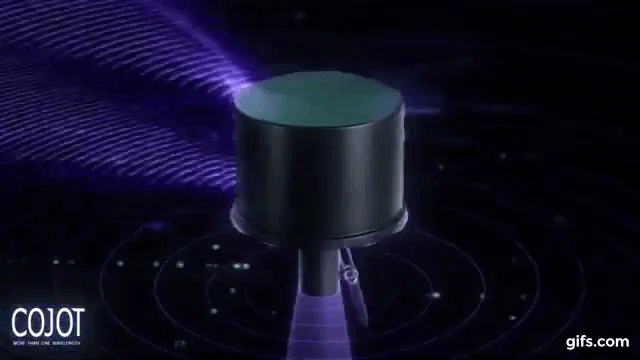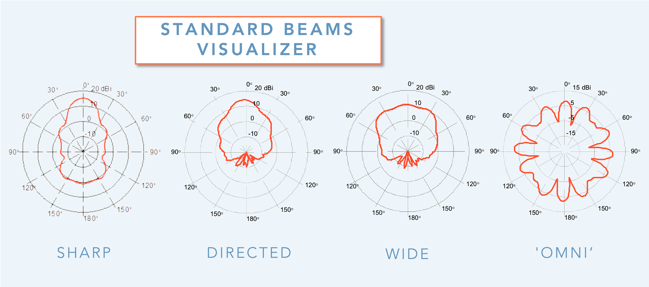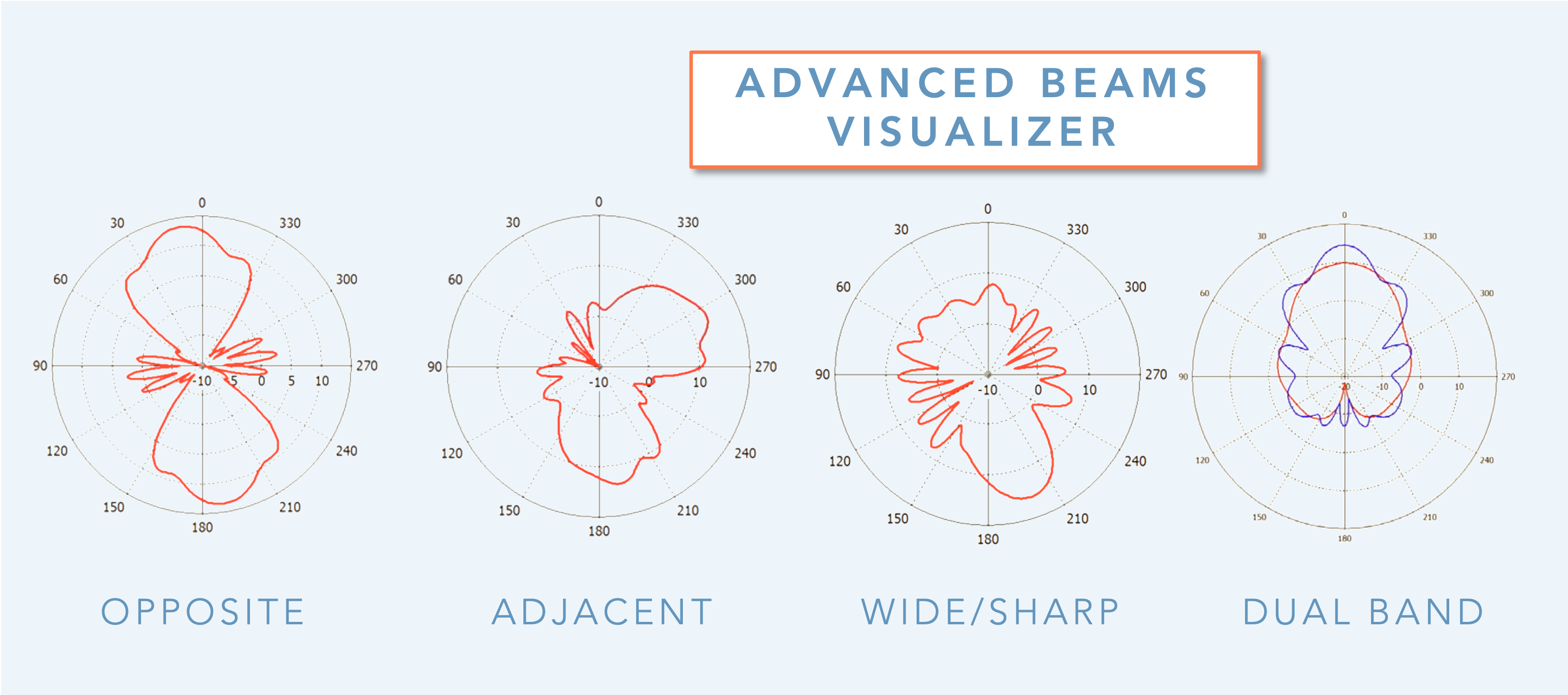A previous post introduced Switched Beam Antenna (SBA) technology - it provides fast-steering of high-gain beams for line-of-sight communications and countermeasures covering many microwave military and commercial frequency bands. SBAs contain twenty or more directional antennas that can be selected in combination by command. These element amalgams have the ability to form many types of pre-set and custom beam types, pointing all around the antenna.
Watch this video for a quick introduction.
Switched Beam Antennas primer
Typical switched beam antennas contain twenty directional antennas that can be "switched" by serial or ethernet command. These elements have the ability to form several types of pre-set beam patterns, as well as customized patterns, directing them azimuthally in 18 degree increments, as seen below. The internal microcontroller makes it possible to switch beam direction and/or type in just microseconds, by serial or Ethernet command.

Several types of SBA antennas are available covering bands from 1350-2700 MHz, 3400-3800 MHz, as well as WiFi 2.45 & 5.8 GHz bands. There are also Dual-polarization and High power-handling switched beam antennas for MIMO-communications.
The many beams of SBAs
Switched Beam Antennas easily provide a variety of beam types, categorized as Standard and Advanced. Gains of 10 to 15 dBi are typical, with azimuthal beamwidths as detailed below. A sophisticated switch matrix and RF path phase controls make this azimuthal beam assortment possible.
Note that all beam types possess the same elevation pattern (a property of the directional antenna employed for each of the 20 elements), typically about 14-15 degrees half-power-beam-width.
For the discussion below, beams of the SBA4450B are represented.
STANDARD Beams
The SHARP beam is produced by combining elements that are farthest apart, yielding beams of about 25 degrees HPBW in azimuth and gain of about 15 dBi. DIRECTED beams are slightly wider, achieving HPBW of 29 degrees and gain of about 14 dBi. For WIDE mode, beams of 90 to 100 degrees are produced with gain of about 10 dBi.

A quasi OMNI beam type is also provided by enabling four beams of about 90 degrees each to operate simultaneously. Although the pattern has much azimuthal variation from its peak gains of about 7-8 dBi, it can be rotated in 18 degree increments. By quickly switching the 'direction' of the OMNI mode while receiving or transmitting a signal, omnidirectional-like performance may be actualized.
ADVANCED Beams
Even more interesting beam types can be synthesized by the SBA control and RF electronics, as programmed at the manufacturer or customized by the user. Out-of-the box simultaneous beams types include: OPPOSITE, with 14 dBi beams of about 35 degrees HPBW shooting out fore and aft - a kind of "lighthouse" mode; ADJACENT mode that makes 65 degree beams of about 11 dBi separated by 100 degrees; and WIDE/SHARP, an unusual opposite beam configuration of a tight and wide beam. Surely some clever soul will come up with uses for all these!

Finally, it should be noted that DUAL BAND beams are also possible, such as for the SBA2458B antenna that works at 2.45 and 5.85 GHz bands. Because its directional element is dual band, the spacing of combined elements as a function of wavelength is different for the S and C band. Thus, the gain and beam width of the 2.45 GHz band are lower and greater, respectively, than the beam of the 5.85 GHz band for each beam type.
Get your Switched Beam Antenna
View our selection of Switched Beam antennas. If you don't see exactly what you want, L, S and C band variants are possible.
Contact Cyntony for your specific frequency, polarization and power-handling needs. We'll hook you up for some mean beams!




